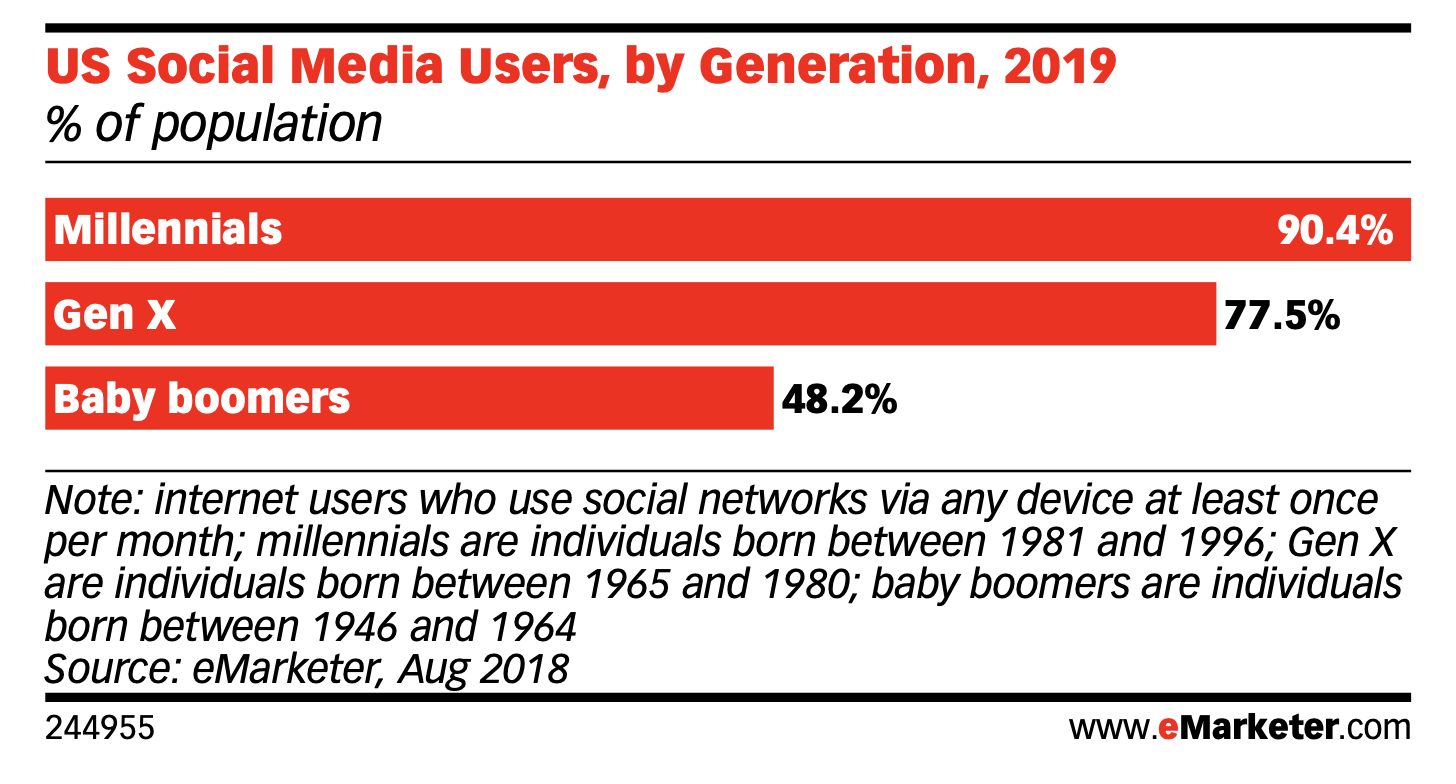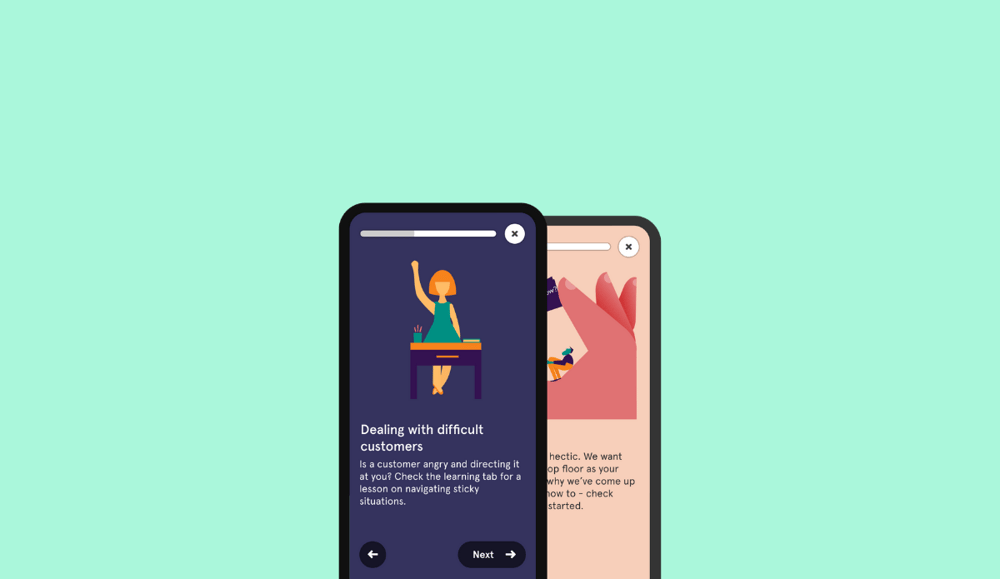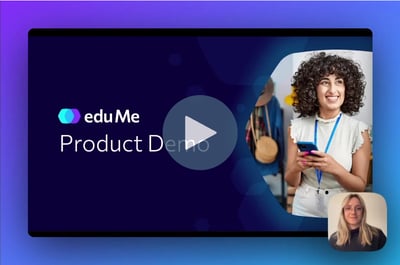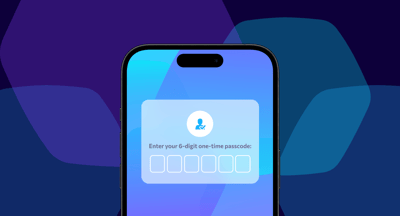At eduMe, the wheels are constantly in motion. From new customer acquisitions, to a Series A raise in the midst of a pandemic, to ongoing product updates that deliver unique value and keep us evolving with our customers’ developing needs.
These product updates have ranged from the small to the large. From tweaks - like optimising the granularity of data reports - to overhauls - like empowering our customers’ workforces with a voice, through our Surveys feature.
Our customers are our lifeblood and we center them at the heart of everything we do. So as to have a better ear to the ground, as well as practice what we preach, we took their ‘pulse’ (eduMe speak for gathering their sentiment through seeking customer feedback).
Once the results were in, they painted a clear picture - our existing lesson format was not providing the same value without video, as it was with video.
<img src="https://5898908.fs1.hubspotusercontent-na1.net/hubfs/5898908/Imported_Blog_Media/Learner01-4.png" alt="Learner01.png">
We all know video is the most engaging type of content out there. Crafting a video takes resources, and with time at a premium in the working day, Learning & Development and Operations Managers needed an equally impactful alternative.
Something that is just as engaging as video, in the event that they are not able to add video to each lesson sent out to their remote workforce or dispersed team.
And that’s how Slideshow Lessons were born.
Introducing Slideshow Lessons
Simplifying content creation
Slideshow Lessons were devised as a means for our customers to create content faster by removing the necessity for creating, or finding, supporting video to accompany each piece of learning material they broadcast.
The slideshow format empowers our customers to:
-
Create content more quickly (freeing up valuable time to input elsewhere, such as lesson ideation)
-
Create content more easily (by removing the necessity for video)
-
Create engaging content, that echoes peoples’ expected interaction with apps as a result of the rise of social media
-
Provide their clients, freelancers or employees with a learning experience that is even more optimised for microlearning, smartphones and on-the-go use
This new format facilitates an array of benefits for both those creating the content (our customers), and those consuming the content (their workforces).
For content creators, it elevates lesson flow and improves presentation of information. This translates to a more interactive and immersive user experience, the ripple effect of which can be higher lesson completion rates, better lesson score and a more empowered, informed workforce. Ultimately - greater Workforce Success.
Slideshow Lessons also put greater power in content creators’ hands. With more flexibility and customisation in the lesson creation process, our customers have more control over what their content looks like, enabling them to get the right message out, at the right time, in a more impactful way.
In a nutshell, our new format provides a more intuitive, quick and easy way for admins to create learning material without compromising on the effectiveness of their learners’ experience.
So, what about the final recipients of the content? The learners - our customers’ workforces?
Improving end user experience
As much as they are about simplifying the content creation process, Slideshow Lessons are about improving the end user experience.
Stories are a novel content format. They’re a new way of consuming information that has arisen in tandem with the internet - specifically, with the proliferation of the smartphone.
Stories are a natively smartphone format - they are usually short in nature and exist in a 16:9, portrait, aspect ratio. In other words, they are intended to be viewed on a smartphone screen. And given that eduMe is a mobile-first remote learning tool - it was a no-brainer to pair the two to create a more effective way of engaging learners.
The initial explosion of the Stories format of content has proven it's a type of storytelling that people love
- Amrita Gurney, VP of Marketing, Crowdriff
81% of Americans now own a smartphone, a staggering 131% increase from smartphone ownership in 2011. Smartphones have also eclipsed desktop computer and laptop ownership by 7%. 1 in 5 Americans are even currently ‘smartphone-only’, a number set to rise.
The way stories present information is more visually engaging, and provides an end user experience that more closely resembles learners’ experiences on apps they use in their leisure time (like Instagram). This familiarity encourages engagement.
Stories have taken social media by such storm that have experienced 15x faster growth than information consumed on newsfeeds. Since 2016, when Instagram first introduced their take on the story format, story creation and consumption is up by 842%.
The adoption - and preference - for stories has been so quick and marked that Facebook’s Chief Product Officer, Chris Cox, remarked that “the stories format is on a path to surpass feeds as the primary way people share things”.
Another noteworthy statistic is that generationally, it’s millennials who make up the largest proportion of social media users, across platforms. These statistics aren’t inconsequential - by 2025 Millennials will make up the largest segment of the global workforce (75%).

Source: eMarketer
So taking their preferences for the consumption of information into account is critical to ensuring they are sufficiently engaged. Having an engaged workforce, after all, is the bedrock of Workforce Success.
So if you feel reminded of your favourite social media app whilst consuming on-the-go microlearning via eduMe, it’s no coincidence. This format makes content consumption more enjoyable, meaning your people are more likely to feel motivated to consume content of their own accord, and do so repeatedly.
What’s next?
Some other things we’ve been working on recently include improved CSV performance, integration with Braze, preview links for lessons, improvements on our integration with Fountain and improved date ranges for API.
As for what’s on the card’s going forward, we’ve got a number of updates in the works.
Slideshow Lessons are just the first of many new, valuable features we’re developing in the coming weeks and months as we scale following a Series A investment. As well as continuing to enhance content creation, we’ll be adding and improving features to deliver customer value faster.
This way, we can ensure our product is eternally ahead of the curve, evolving alongside a global workforce - and a world - in flux.






